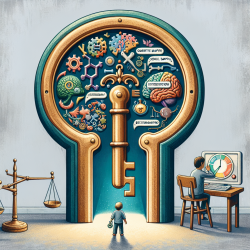Introduction
In the realm of speech-language pathology, particularly in the context of online therapy services provided by companies like TinyEYE, bridging the gap between scientific research and policy is crucial. The research article "Bridging the gap between science and policy: an international survey of scientists and policy makers in China and Canada" provides valuable insights into strategies that can enhance the effectiveness of evidence-informed decision-making. This blog aims to guide practitioners in implementing these strategies to improve their practice and outcomes for children.
Understanding the Science-Policy Gap
The study highlights the importance of bridging the gap between scientific evidence producers (scientists) and users (policy makers). Conducted in China and Canada, the research identifies key strategies to facilitate this process. For practitioners, understanding these strategies is essential to align their practice with evidence-based policies effectively.
Key Strategies for Practitioners
The study identifies several strategies that practitioners can adopt to bridge the science-policy gap:
- Focus on Policy: Conduct research that addresses policy questions. Practitioners should align their interventions with policy priorities to ensure their work is relevant and impactful.
- Science-Policy Forums: Engage in forums where researchers and policy makers discuss findings and policy requirements. This interaction fosters mutual understanding and collaboration.
- Policy Briefs: Utilize policy briefs to communicate research findings effectively to policy makers. Clear and concise summaries can facilitate the adoption of evidence-based practices.
- Collaboration in Study Design: Involve policy makers in the design and framing of research projects. This ensures that research is aligned with policy needs from the outset.
- Joint Research Projects: Form partnerships between university scientists and government scientists to conduct joint research. This collaborative approach can enhance the relevance and applicability of research findings.
Implementing the Strategies
Practitioners can implement these strategies by actively seeking opportunities to engage with policy makers and researchers. Attending conferences, participating in forums, and contributing to policy briefs are practical steps to integrate these strategies into practice. Additionally, leveraging technology, such as web-based portals and email updates, can enhance communication and collaboration with policy makers.
Encouraging Further Research
While the study provides a foundation for bridging the science-policy gap, further research is needed to explore the effectiveness of these strategies in different contexts. Practitioners are encouraged to conduct their own research, focusing on local policy needs and challenges. By contributing to the body of evidence, practitioners can play a vital role in shaping policy and practice.
Conclusion
Bridging the gap between science and policy is a dynamic and evolving process. By implementing the strategies identified in the study, practitioners can enhance their practice and contribute to better outcomes for children. Collaboration, communication, and a focus on policy-relevant research are key to achieving this goal.
To read the original research paper, please follow this link: Bridging the gap between science and policy: an international survey of scientists and policy makers in China and Canada.










